Recently, the New York Times released a three-part video series titled “We’re Cooked”. If you didn’t see it, the links to the series and other articles that we reviewed for reference are located at the bottom of this post. Here are some highlights.
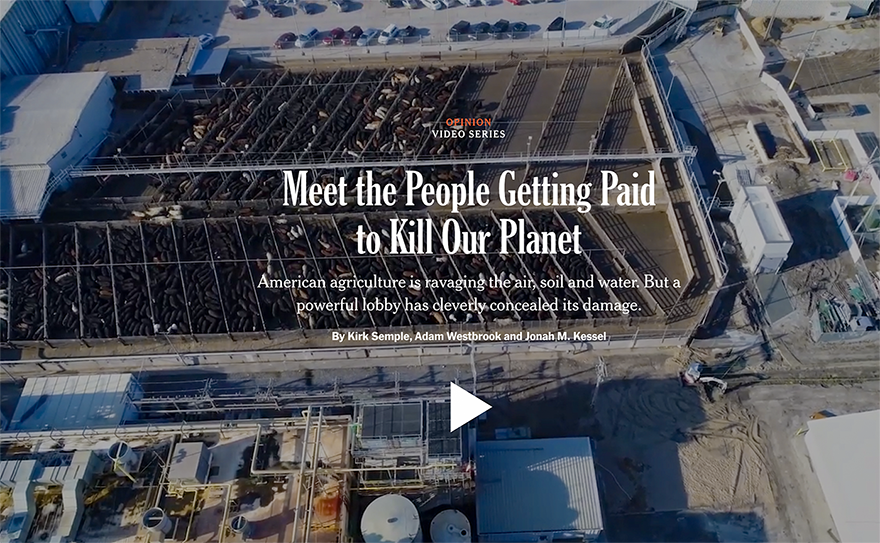
As consumers, it can be difficult to navigate through the “smoke & mirrors” used in marketing the foods we consume. In the first of the video series, the illusion of our food supply is uncovered and the driving forces behind it exposed.
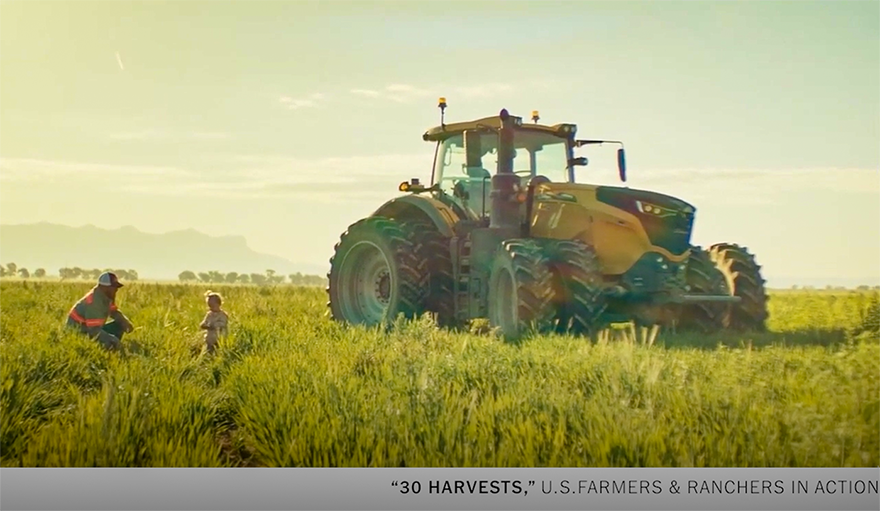
We are often hoodwinked by images and words that are rarely the reality of our food supply. The average family farm is around 444 acres and the number of them are drastically on the decline. They are being rapidly replaced by industrialized agriculture, which are large scale operations, with the average acreage ranging from 82,500 to 190,000, of the top five producers. The above image represents only 3% of America's cropland, but these are the images used by industrialized agriculture.
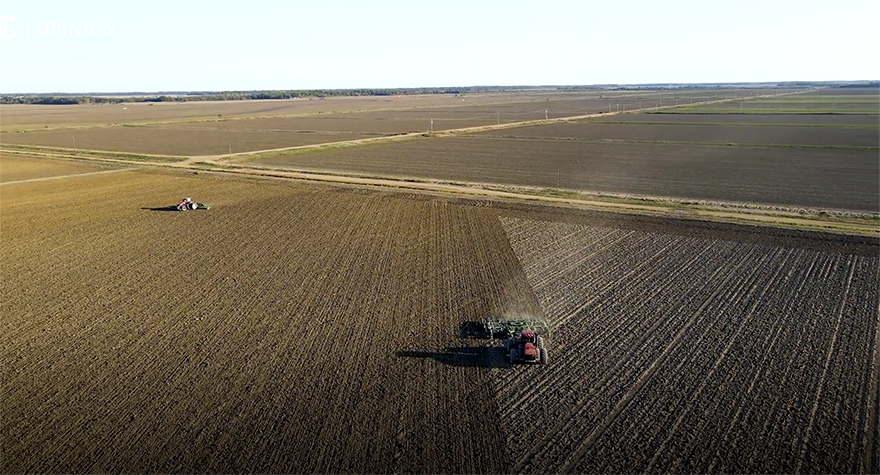
These large industrialized farmlands rely on glyphosate based chemicals like Roundup and 2-4-D chemicals and fertilizers, to get the biggest bang for their buck. This also produces cheap food.
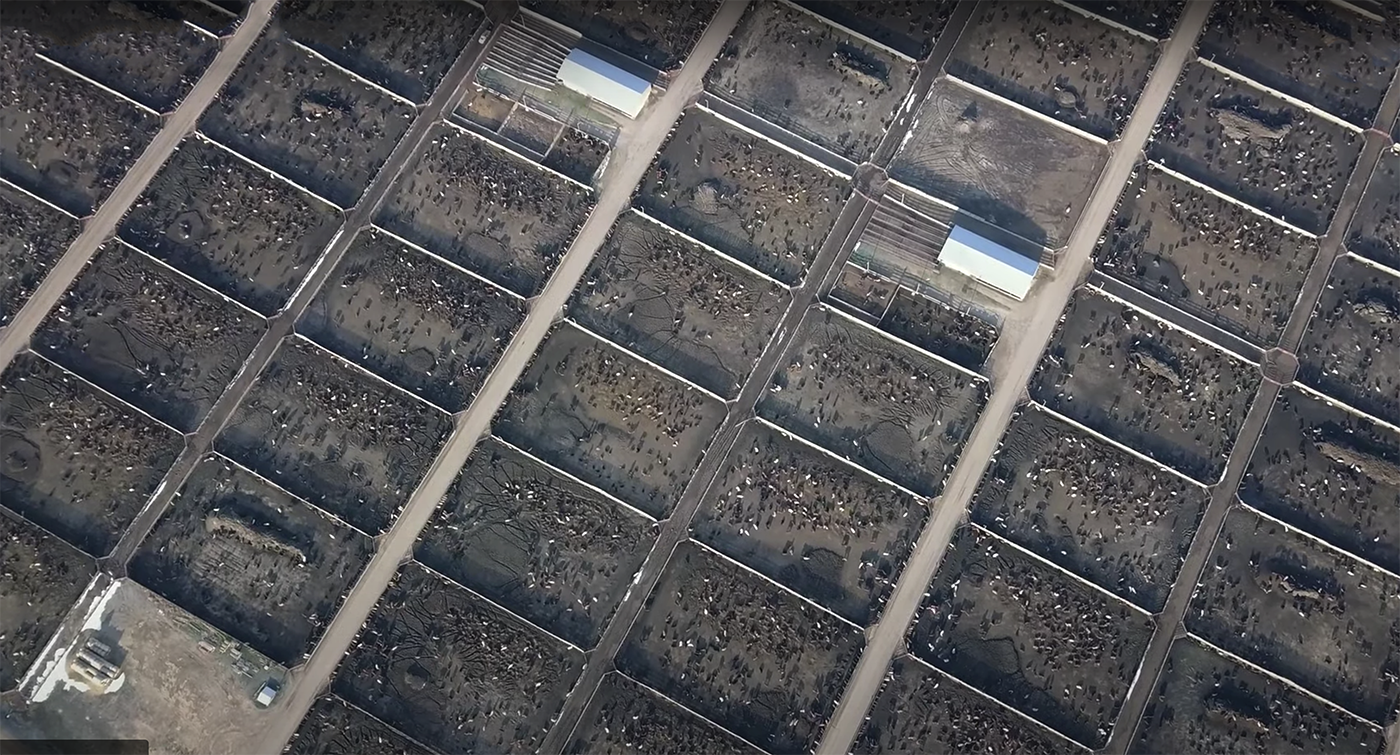
In the production of animal protein, specifically Confined Animal Feeding Operations (CAFO), they rely heavily on antibiotics, hormones and GMO corn, soybean & grains to fatten the animals up quicker. The conditions are less than optimal, with most qualifying as inhumane. The second video gets right to the heart of this.
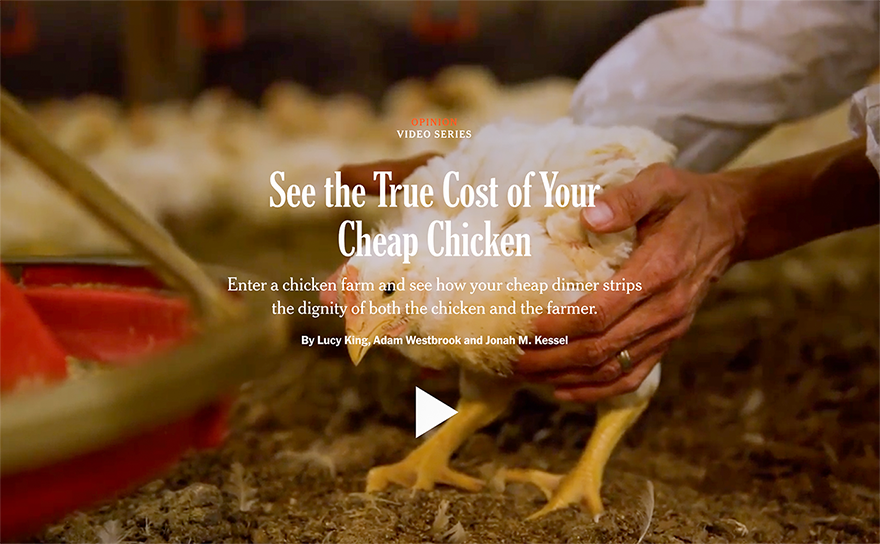
The run off of chemicals and animal waste are also hazardous to our water supply. It seeps into the ground affecting other foods we consume, as well as contaminating our rivers, lakes, oceans and our drinking water.
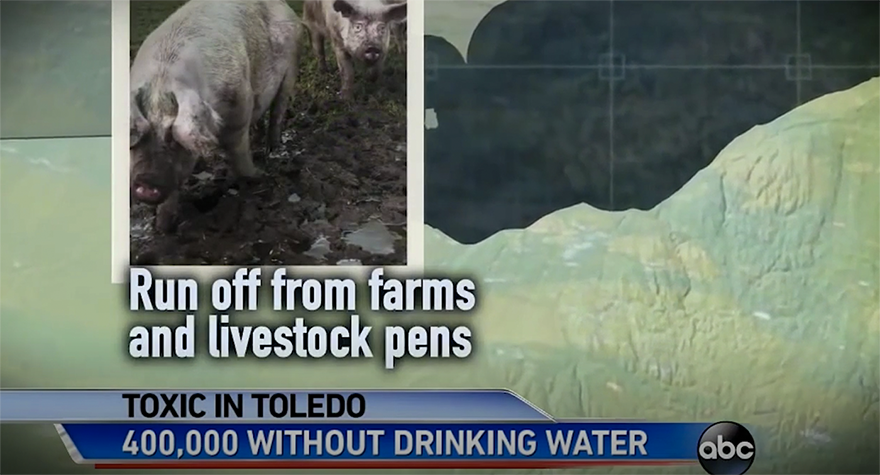
And, then of course there is the air that we breathe...
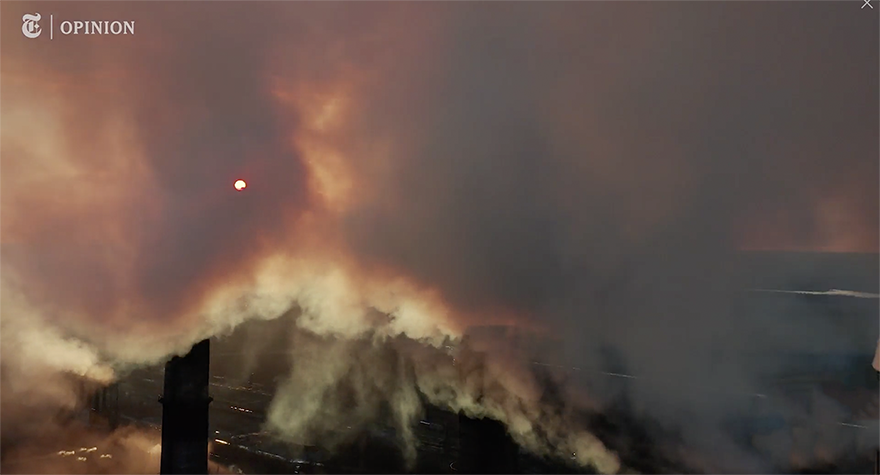
knowingly being filled with carbon dioxide, methane and nitrous oxide emissions.
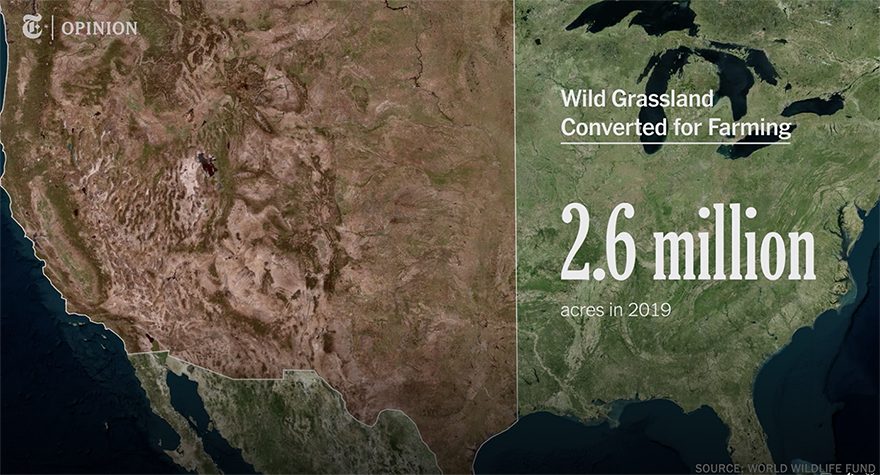
All of these practices come with very little environmental regulation. Our agricultural systems have the most powerful lobbyist on the hill, with the biggest one being, "The American Farm Bureau Federation".
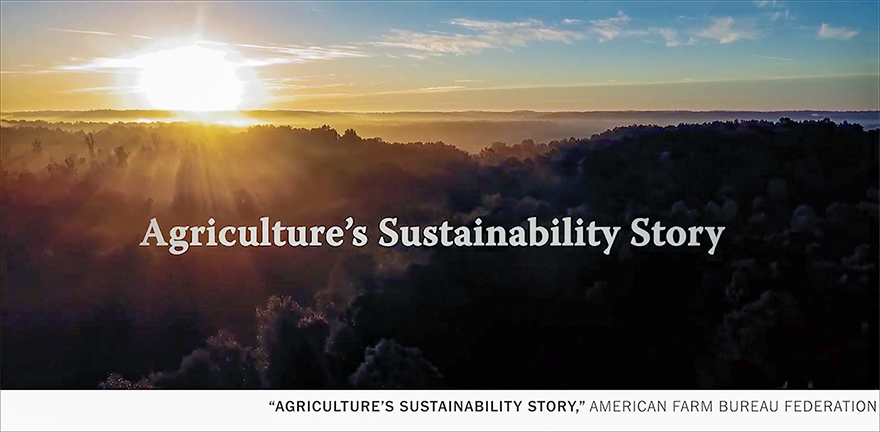
They hide behind slick marketing campaigns with hijacked slogans that can actually bring tears to your eyes. Senator Cory Booker, who serves on the Senate Agricultural Committee states "The climate movement in America doesn't talk enough about food. You cannot solve the climate problem, unless you fix the American & global food systems."
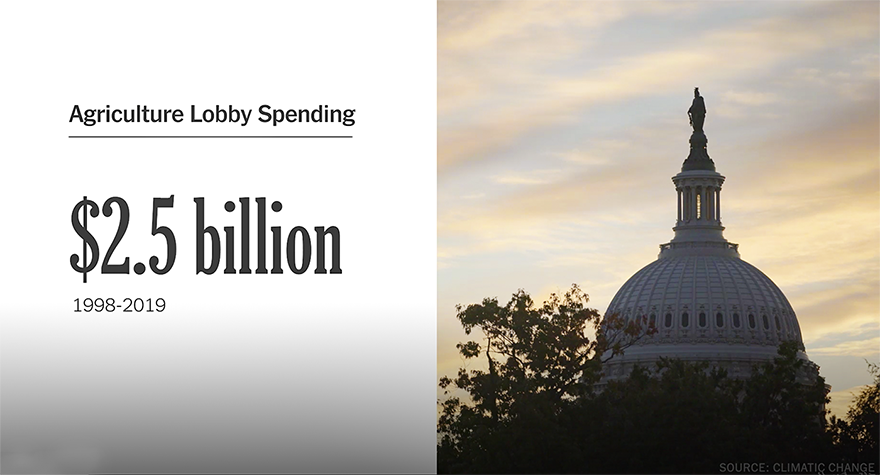
These systems that were designed to feed us - are also killing us, while destroying our planet too. Policies to create change usually end up dead in the water, as both political parties are culpable in receiving industry support.
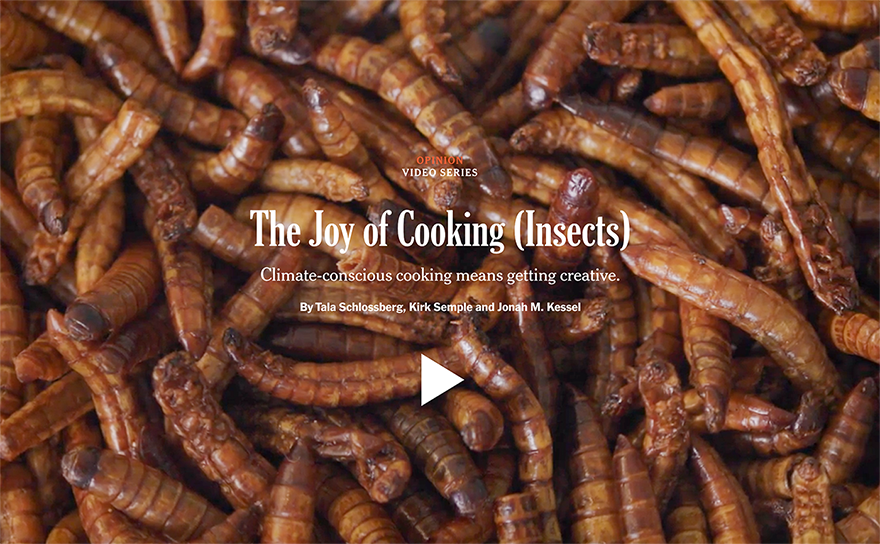
So, what's the solution? Some have suggested that BUGS are the food of the future. Away to supply a highly affordable protein to our growing population. The details on our food of the future are revealed in the third video.
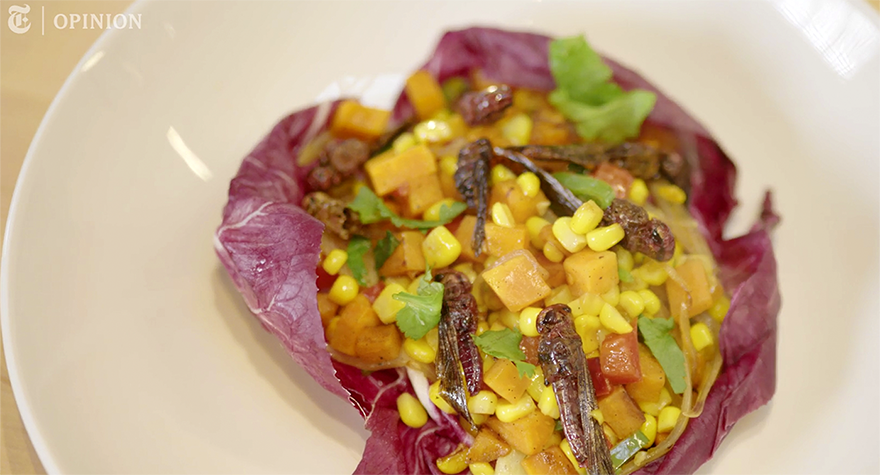
According to chef Joseph Yoon, changing people's minds will have to start in the kitchen. Perhaps you would like to try Cicadas Flamed with Sake, or Lemony Citrusy Black Ants? Or, "Cicada Nief Kimchi, which perfectly complements eggs and the fennel just pops!" I think I would prefer to take his word for it.
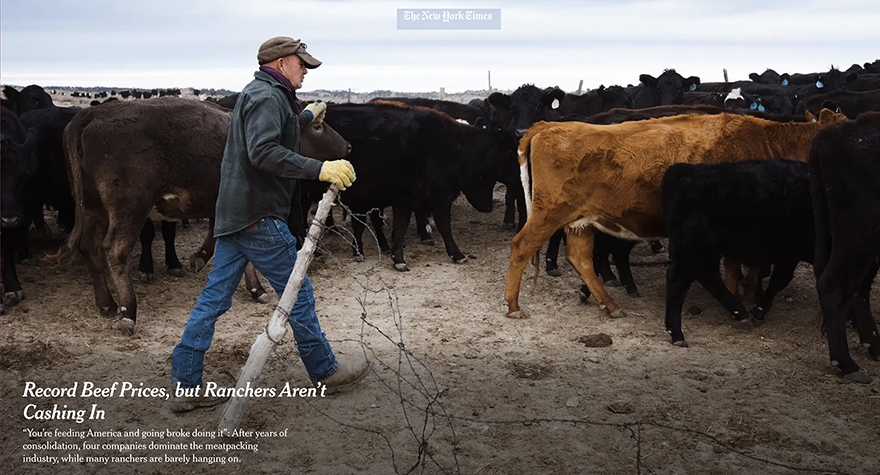
The cost of food is certainly affecting many Americans. Prices are currently making a lot of ranchers unhappy too. Some cattle ranchers are contemplating getting out, as they feel they are not getting their share of the consumers dollars. Many family cattle ranchers are good stewards of the land, but they are caught up in an unsustainable system, that works something like this; The cattle rancher has a herd of breeding cows that calve every year, the calves are then weaned off at around six months of age, they are then shipped off to a CAFO to fatten up to slaughter weight, and from there they are sold to the packers. Four of the biggest packers produce 80% of America's beef supply and make 85% of the market shares.
For a family rancher to switch to a 100% grass-fed animal/product, they would have to be able to keep those animals on pasture for another two years, which would require more land. In addition, they would have to go without income for those years. They are caught between a rock and a hard place.

As we dug in further, the New York Times also featured a story on building better meat packing facilities. A cattle farmer that was highlighted as an alternative to big ag production. It was jaw dropping to think that his production model is a better solution...
"This particular cattle farmer raises 30,000 head of cattle each year in long feeding barns of his own design. At the end of one, he has built a wood-paneled whiskey room with big glass windows where he can sit and watch his cows.

https://www.nytimes.com/2021/12/27/business/beef-prices-cattle-ranchers.html
All images but the last are screen shots form the New York Times video or articles.

4 comments
Jill, thank you for strengthening my resolve by posting this article. This year was my first in 50 years where I DID NOT celebrate by having an upscale steakhouse meal. I have eliminated beef and chicken, subbing your bison. Thanks to all of you at WIBC for raising and providing these animals for us.
I toured Rapid city meats about ten years ago. They butchered about 60 buffalo a day. and most all of those bison come from feed lots. It was so steamy on the kill floor. Couldn’t hardly see the guys up on the step ladders working on bison. The cow in the open squeeze waiting to be killed was all bug eyed with fear. Waiting to be killed…seeing the dead one…with all that blood around, nostrils flairing, laying not 5 feet from her. I finally located the USDA inspector hardly visible in all that fog of steam. Had his barrel and a tub. The two tools of his trade. The bad organs goes in the barrel and the good in the tub. So many livers in the barrel. I asked him how many he was throwing away. He then showed me all those whitish and yellow abscesses…something akin to cancers I thought. He said for the younger animals it was around 50%. And the older bison it was 90 or so percent. I asked what was young and what was old? He said 2 yr. old’s were the young. And I, thinking there had to be a number of years to make an “old” heard, "3-4 year old’s!!!. Yes, those 3-4 yr. olds were still mostly adolescents. Junior high kids if it was humans. And already toxic, impaired functioned livers…whose function of filtering out all those toxins was now overwhelmed. and not working. Which means those toxins now pass into the rest of the body. The organs, the muscles. And this, my friend, is what 95% of the bison end up at. In the feed lots just like the cattle the NY Times writes about. Since 1976 and a standing herd of 300 grass fed bison we have only had one bison butchered with abscessed livers. And that was an animal we hadn’t known had been shot in the neck below the chin. The wound covered by the thick wool. The locker, knowing we always wanted the liver packaged, called and said, " the liver was abscessed. Needs to be thrown away…but the rest of the carcass looked fine". My response? “Throw it all away”. It is all tankage. If the liver isn’t working all the meat is compromised. And to think the bison industry minus the few like Wild Idea, who treat them as real bison… on the land…. living and drinking and roaming. All those shell of bison animals, They, most all, have compromised product. Maybe not to the extent of the growth hormones like cattle but an environment where they have to stand and lay down 24 hours a day in all their excrement. and the smell that goes into those big, beautiful lungs. Not good for any animal.
Jill, your photographs, writing, and voice just keep getting better. Good work.
The truth is often devastating, overwhelming, and seems impossible to fix. Corporate profits guide our economy, our elected leadership, our health from the food we eat, and the future of the planet.
We tolerate ignorance, glory-seeking, and corruption. Dishonorable people have too much power and wealth while too many honorable people struggle and suffer. It feels like it’s getting worse and worse.
The whole crew you have built are living proof that a wild idea can make things better and is possible with grit and determination. Thank you for all the years of love and labor.
I’ll place another order today in honor of the entire team that is the Wild Idea Buffalo Company!
This is a powerful, thought provoking and masterfully assembled message. Let’s hope it inspires more of us to speak up with our forks and our votes. And our credit cards.
Thank you Jill, Dan and everyone at WIBC.